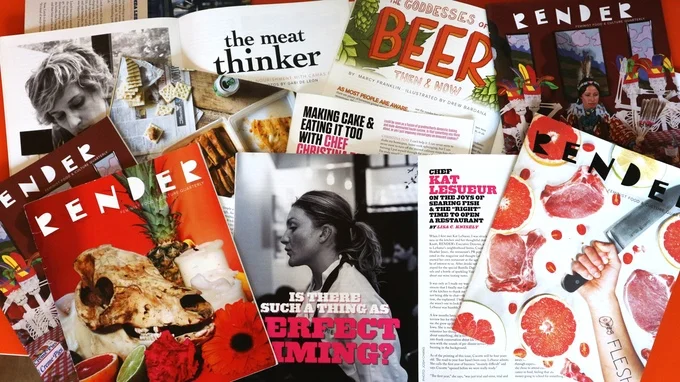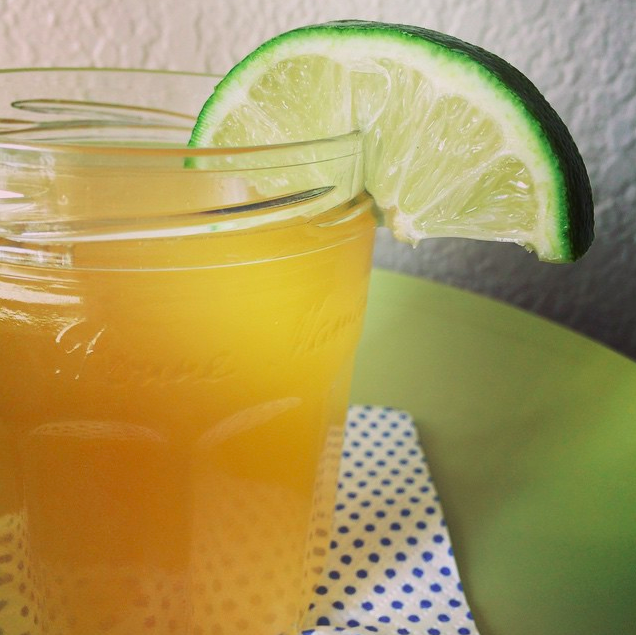Photo of Isa Chandra Moskowitz by Randy Edwards.
If you use enough cookbooks, they start to feel like your friends. You get to know their personalities, their quirks. That one’s finicky, but if you let the recipes chill out a bit, it’ll lead to a good dinner. This one is high maintenance, but worth it if you have the time. If you’re really lucky, you’ll find a cookbook – or even better, a cookbook author – who starts to feel like your BFF: easy going; reliable; fun.
For the many in the vegan world, that kitchen soulmate is Isa Chandra Moskowitz. Her down-to-earth, conversational recipes are never fussy or pretentious; yet over the last decade she has also managed to pioneer and popularize a whole grocery list of innovative techniques that defy the kale-and-brown rice stereotypes of vegan cooking (though there’s plenty of that, too). Delicate omelettes, toothsome sausages, bake sale-worthy pies, cakes, and cookies—now they spill forth from vegan kitchens nationwide.
But, after churning out eight successful books in nine years, Moskowitz has turned her sights to a new challenge: running Nebraska’s first and only vegan restaurant, Omaha’s Modern Love. Long-time vegan and freelance writer Rachel Zurer asked Moskowitz about the transition from author to restaurateur, her journey to veganism, and...why Omaha?
Rachel Zurer: Let’s start with the obvious question. Why did you give up eating animal products?
Isa Chandra Moskowitz: When I was around 7, one of my cats had kittens. Seeing the bond between the mother and child was so intense, especially watching a kitten be taken from its mother to be adopted. I imagined it must be a pretty similar feeling for cows.
Also around that age, I started meeting vegetarians, and realized giving up meat was possible. Soon after that, at around 16, I went vegan. I was like, “Oh, I can cook all these things, and I don’t need to eat animal products. A lot of this food is really fucking good, too!”
RZ: What’s it like running Nebraska’s only vegan restaurant? Is there a moment or story that kind of sums it up for you?
ICM: How about right now, where I’m sitting outside starving, and just having my first bites of hummus at 5 p.m.? Having a restaurant is just overwhelming.
But seriously, our staff is pretty great at explaining everything and I think people know what they’re getting into. It smells so good outside all the time; people just can’t resist the food. We’ve had 98 percent really positive reactions, and people coming from across the country to eat here. People ask, “So everything is vegan except the ice cream?” It’s made with cashews, but it’s so rich and creamy they don’t realize it’s not dairy.
RZ: Tell me about deciding to move to Nebraska.
ICM: I grew up in Brooklyn, but I left New York in 2008, and went to Portland first. It was great; it’s a really fun city with lots of good vegan food. But, it didn’t feel like where I was meant to be. It wasn’t a city that needed anything vegan. I mean, there’s a vegan mini-mall there already. Here in Omaha, I love the effect I’ve been able to have. What I’m doing is needed here—not just a vegan restaurant, but a non-Cheesecake Factory restaurant. There are so many farmers doing great work on veggie farms, organic farms, struggling to make it happen in the shadow of Omaha Steaks. I’m more of a fan of potential than establishment. I’d rather be creating than just following along with what everybody else is doing.
RZ: What project are you most proud of?
ICM: My whole forty-two years is flashing before my eyes!
I’m really proud of having been a teenager who made the decision to go vegan. I’m proud of my teen self – before the Internet – learning how to cook, doing it for the love of it, being an activist. I picture myself at sixteen, making tons of soup for homeless people, feeding a band, really not even questioning it—just going for it. I was so unafraid. Now, I’m always afraid of everything and second guessing things, and I have to remind myself, “That’s not how you started.”
RZ: How has being a woman shaped your choices and path?
ICM: It probably made me a lot more determined. Never in my life have I expected anything to be handed to me. It’s partly being a woman, but also having come from a poor family with a single mother. I feel like that has made me take a lot less shit.
In terms of being taken seriously as a female chef, having been a cookbook author, my experience is a bit different. When people think of a woman cooking, they think of pies, aprons, being in a home kitchen. That’s actually what I do. A restaurant situation, that’s where the sexism really sets in. I’m kind of realizing that right now. My two chefs are women, and I’m watching them kick ass. But how many women win prestigious awards, get taken fucking seriously? Very few. People have said a few negative things about our kitchen being run by women.
RZ: Do you see a connection between women’s rights and animal rights or veganism and feminism?
ICM: Yah, fuck yeah. There’s a huge connection. I think all oppression is connected. It’s all interchangeable. If you understand sexism, you can understand animal oppression, too. Way in the beginning, one thing that brought me toward veganism was idea of motherhood. I’m not a mother myself, and I’m not gonna be, but holy shit, those bonds between mothers and children in the animal kingdom were really profound for me. That’s what made sense to me at a really young age: What can I do to stop oppression? What privileges can I give up? Going vegan was one huge one for me.
RZ: What’s next?
ICM: I want to write a novel. There will be food in it. Also laundry. Laundry is next for me.
Photo and recipe courtesy of Isa Chandra Moskowitz.
Serves 4
Total time: 1 hour (not including cashew soak. 30 minutes if using canned butternut.)
Active time: 20 minutes
Ingredients
1/2 pound pasta (any kind)
Sauce:
½ cup cashews, soaked for at least 2 hours
1 ½ cups vegetable broth
1 ½ cups roasted butternut or other winter squash (roast yourself or use canned)
2 tablespoons mellow white miso
2 tablespoons nutritional yeast (optional)
1 tablespoon fresh lemon juice
For the rest:
1 tablespoon olive oil
1 medium yellow onion, quartered and thinly sliced
3 cloves garlic, minced
1 teaspoon dried rubbed sage
¾ cup dry white wine
Several dashes fresh black pepper
½ teaspoon salt, or to taste
For garnish:
Extra roasted squash
Pepitas, or chopped pecans, walnuts, or hazelnuts
If not using canned squash, roast your squash:
Preheat oven to 425 degrees F. Line a rimmed baking sheet with parchment paper. Using a large chef’s knife, cut the round part of the butternut from the long part. Slice the round part in half and scoop out the seeds. Brush or spray parchment lightly with oil and place squash pieces, cut side down, on the baking sheet. Bake for about 45 minutes, or until squash is very tender. When cool enough to handle, scoop out the squash needed for this recipe. Save the rest for whatever you like: soup, muffins, or just mashed up with some ginger, maple syrup, and cinnamon.
Once the squash has roasted, bring a salted pot of water to boil for the pasta. When boiling, cook pasta according to package directions, drain, and set aside.
Meanwhile, drain the cashews and place them in a blender with the vegetable broth. Blend until very smooth. Rub sauce between your finger and when hardly any grittiness remains, add the roasted butternut, miso, nutritional yeast (if using), and lemon juice. Puree until smooth, scraping down the sides with a rubber spatula to make sure you get everything.
While the sauce is blending, start the onions. Preheat a large cast iron pan over medium heat and saute onions in olive oil and a pinch of salt for about 7 minutes, until lightly browned. Add the garlic and saute for 30 seconds or so, just until fragrant. Mix in the sage and pepper. Then, add the wine and salt and turn the heat up to bring wine to a boil. Let boil for about 2 minutes to reduce a little.
Turn down the heat to medium-low. Now, add the butternut cream to the pan, and stir to incorporate the onions and everything. Heat through, stirring occasionally, for about 5 minutes. The sauce should thicken a bit. Taste for salt and seasonings.
Set aside some of the sauce (you can reserve a cup or so for veggies if you’d like to throw some on top.) Add the pasta, and toss to coat. Serve topped with additional roasted squash and a sprinkle of nuts.
Rachel Zurer is an editor at Backpacker Magazine, and a blogger for the vegan lifestyle blog Vegansaurus. She has an MFA in creative nonfiction from Goucher College.





































